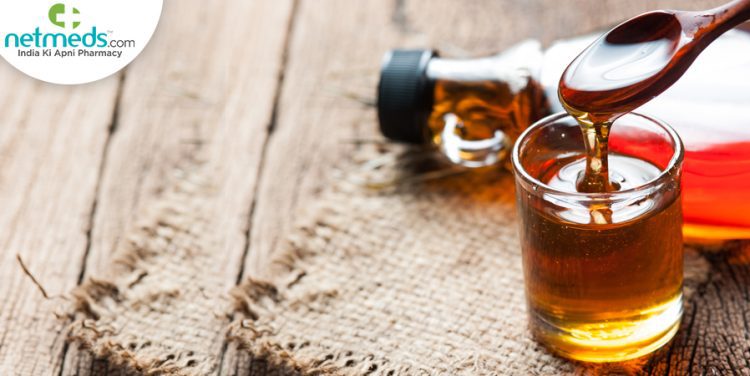All you need is a dash of pure maple syrup to relish that perfect English breakfast, whether it is on those hot, fluffy pancakes or soft, succulent waffles. Maple syrup is not a staple in Indian kitchens. Still, thanks to the awareness of the global cuisine, this lip-smacking, gooey liquid found an indomitable place on our dining tables.
Today, let us take you through the exciting journey of maple syrup preparation, its health benefits, and recipes even as you relish your breakfast, reading our specially curated health content. As the name suggests, Maple syrup is indeed a syrup extracted from the xylem sap of sugar, red or black maple trees. Maple trees belonging to the Acer genus go with the botanical name Sapindaceae.
Though native to Asia, these deciduous trees that grow up to a height of 33-148 feet are found extensively in Europe and North America and are often associated with that bright autumn leaf colour.
In colder climatic regions, these trees store starch in their trunks and roots and then convert it into sugar, which slowly rises into the sap in the late winter and early spring months. Maple syrup is then tapped by drilling holes into the trunks and is processed by heating it at the highest temperature to evaporate the water. The concentrated syrup is packed.
Though there are hundreds of varieties of maple trees, this particular syrup can be extracted from only three varieties of trees – the sugar maple (Acer saccharum), the black maple (Acer nigrum) and the red maple (Acer rubrum) owing to high sugar content amounting roughly to 2 to 5 per cent.
History of Maple Syrup:
Though there is no archaeological evidence to suggest the origin of maple syrup, it is widely accredited to the indigenous people of North America. The settlers from the European countries soon adopted it, and eventually, the methods of production changed. Technological advancements were brought into maple syrup processing by the 1970s, which further refined the final taste.
Today, most of the world’s maple syrup is produced in Canada and the United States. Quebec, the Canadian province, is the world’s largest producer of maple syrup, owning 70 per cent of the total output. The maple tree, maple sugar, and maple syrup are a sentiment for Canadians. So much so that the leaf of the maple tree is depicted on the country flag.
Also Read: Is Brown Sugar Healthier Than White Sugar: Learn About Health Benefits, Uses, Recipe, And Side Effects
Maple syrup is graded based on its taste and texture. The four varieties of this syrup available in the market are:
- Golden colour, sweet and delicate taste
- Bright amber colour and rich taste
- Gooey golden colour and subtle taste
- Dark tinge and stronger taste
Whatever the grading is, there is no doubt that this super delicious syrup is prized for its nutritional content.
Discovered by the Algonquians, the native language group from North America, for being a fantastic source of energy and nutrition, maple syrup is a treasure trove of antioxidants, polyphenols besides whopping amounts of manganese, riboflavin, zinc, calcium and amino acids.
Also Read: 5 Essential Antioxidants To Add To Regular Diet For Enhanced Overall Health
Every 100 grams of maple syrup provides 260 calories, and the sweetness is derived from the sucrose. The bright brown colour is achieved during evaporation. And contrary to the belief that all that sweet and nice is harmful to health, maple syrup offers a wide range of health benefits.
Health Benefits
Rich In Antioxidants:
Being a natural plant-based product, maple syrup is loaded with antioxidants. Antioxidants play a significant role in protecting the cells against free radicals, thus reducing the risk of cancer, heart diseases and other chronic conditions. However, if you have diabetes, do not consume maple syrup for breakfast or in large quantities.
Boosts Cognitive Functions:
Maple syrup is rich in copper, which has an imperative role in the human body of producing red and white blood cells and producing ample amounts of hemoglobin. Regular intake of maple syrup improves brain functions, builds the immune system, and maintains the nervous system, thus reducing neurodegenerative conditions like Alzheimer’s and Parkinson’s.
Triggers Metabolism:
Rich in manganese, this gooey, golden syrup keeps the cells active, thus triggering metabolism, strengthening bones, forming connective tissues and shielding cells from oxidative stress.
Also Read: Tremendous Calcium Boosters: Refreshing Smoothie Recipes For Healthy Bones And Joints
Maintains Heart Health:
Loaded with potassium, maple syrup aids in controlling blood pressure, maintaining fluid balance and aids in heart functioning. Potassium ensures optimum functioning of the nervous system, provides proper muscle function and improves the quality of life.
Protects Nervous System:
Riboflavin, also known as B2, is found amply in maple syrup. Vitamin B2 is essential for keeping skin healthy, promoting good vision, proper functioning of the nervous system and keeping you active. Include maple syrup in breakfast regularly for that instant hit of energy. 
Is Maple Syrup or Honey Healthier?
Both maple syrup and honey are plant-based natural sweeteners. Maple syrup and honey may look like twins in colour and texture but are slightly different in therapeutic properties. Honey is quite popular worldwide and readily available, whereas pure maple syrup gets exported to other countries from the US or Canada.
There are a few similarities too! These wonder foods possess copious amounts of antioxidants, copper, iron, manganese, potassium, calcium and zinc. And the similarities end there.
Honey also serves as a popular home remedy for various skin conditions thanks to its antibacterial, antimicrobial and antiviral properties. Nothing much has been said or proved about maple syrup’s beauty properties, except for the occasional suggestion of wetting your hair with this gooey extract to smoothen your hair. If it drips, usurp it. Sweet!
Recipes With Maple Syrup:
Incorporate maple syrup into daily cooking to derive its benefits. Here are a few easy recipes.
Maple Syrup Fruit Salad:

Ingredients:
½ cup apple, chopped roughly
½ cup ripe mangoes, chopped roughly
½ cup watermelon cubes, deseeded
¼ cup grapes, cut
¼ cup banana slices
2 tsp maple syrup
Method:
In a bowl, mix all chopped fruits
Add in maple syrup and give it a good stir
Refrigerate for an hour and serve it with ice-cream
Nutrition:
Fruit salad is an instant energizer and restores vitamins and minerals. The juicy fruits hydrate the body and maintain electrolyte balance. Apples are rich in fibre and antioxidants. At the same time, mangoes provide a daily dose of vitamin A and vitamin C. Relish watermelons in this salad to maintain fluid balance, even as you bite into grapes for vitamin B1 and thiamine. The goodness of banana is well-known as it protects your heart from the effects of high blood pressure.
The addition of maple syrup provides a rich source of antioxidants, manganese and copper.
Also Read: Vitamin B1 – Functions, Food Sources, Deficiencies and Toxicity
Chewy Maple Syrup Cookies:

Ingredients:
1 cup whole wheat flour
¼ cup maple syrup
½ tsp baking powder
¼ tsp baking soda
¼ cup milk
Method:
Preheat the oven to 180 degrees celsius
In a bowl, mix in whole wheat flour, baking powder and baking soda
Stir in maple syrup and give it a good stir
Slowly add milk and make it into a smooth dough
Pat it into the shape of cookies and bake till they turn crisp and golden brown.
Nutrition:
These chewy cookies are a fantastic, guilt-free treat. Whole wheat is an excellent source of digestive fibre, iron, folate, selenium and potassium. Maple syrup adds a sweet taste to the dish and serves as an instant energizer thanks to the presence of various vitamins and minerals. Adding milk to this dish brings in calcium.
Side Effects:
Maple syrup is a natural plant-based product but is extremely sweet to taste. If you have diabetes, do not consume maple syrup regularly. It may shoot blood sugar levels instantly. This syrup’s highly concentrated sugar or sucrose content can cause dental decay. Ensure brushing your teeth immediately after consuming maple syrup.
Conclusion:
Maple syrup tapped out of the maple trees found extensively in North America and Canada. A natural sweetener, this gooey, golden liquid goes through some evaporating process before it gets ready for consumption. Graded by the colour and taste, maple syrup offers loads of antioxidants, vitamins and minerals like manganese, riboflavin, zinc, calcium and amino acids.
Regular but moderate consumption of this luscious liquid helps maintain the nervous system, boosts metabolism and protects the heart. However, if you have diabetes, do not consume maple syrup regularly. If you are pregnant, talk to your doctor if you want to include maple syrup in your regular diet.
Source by www.netmeds.com


